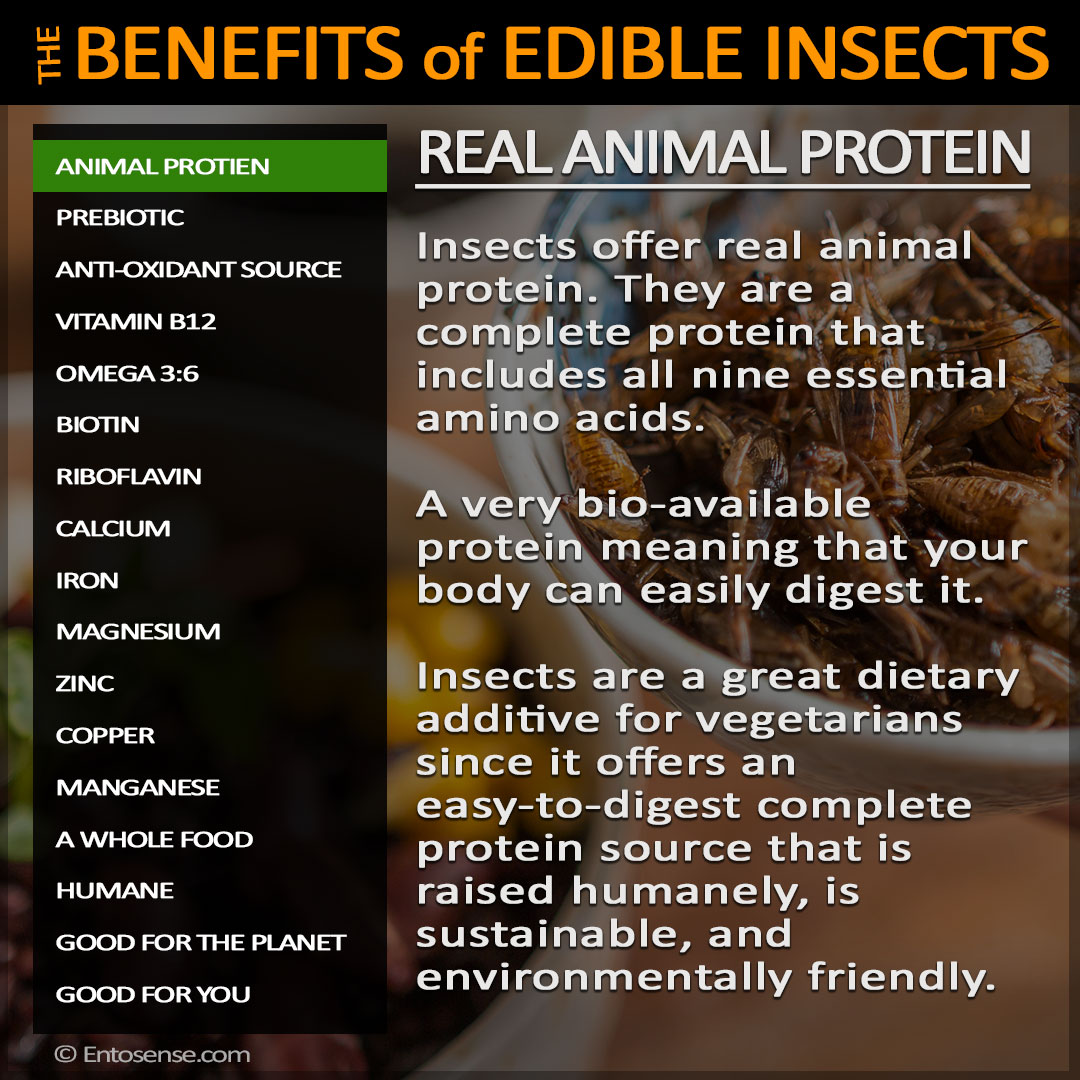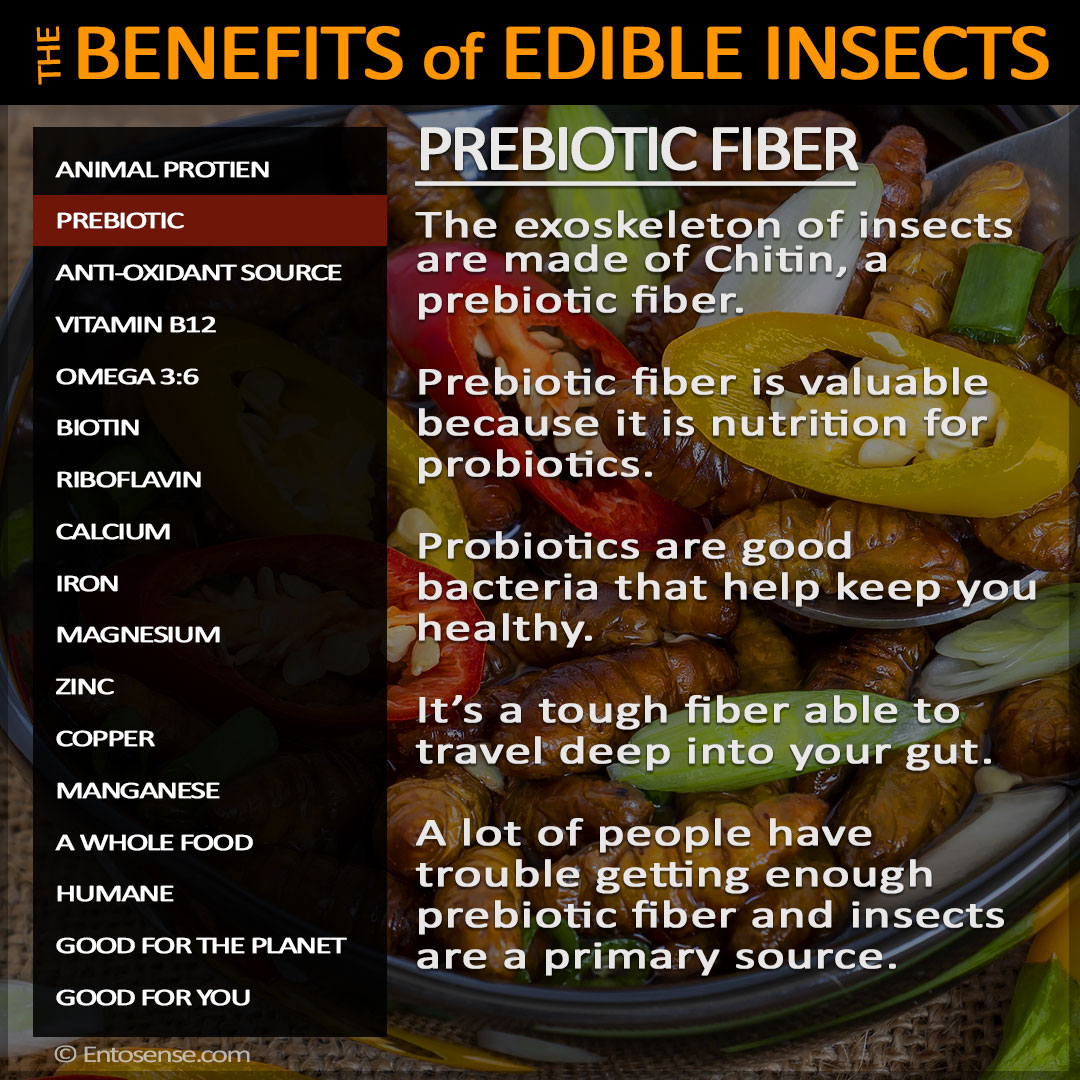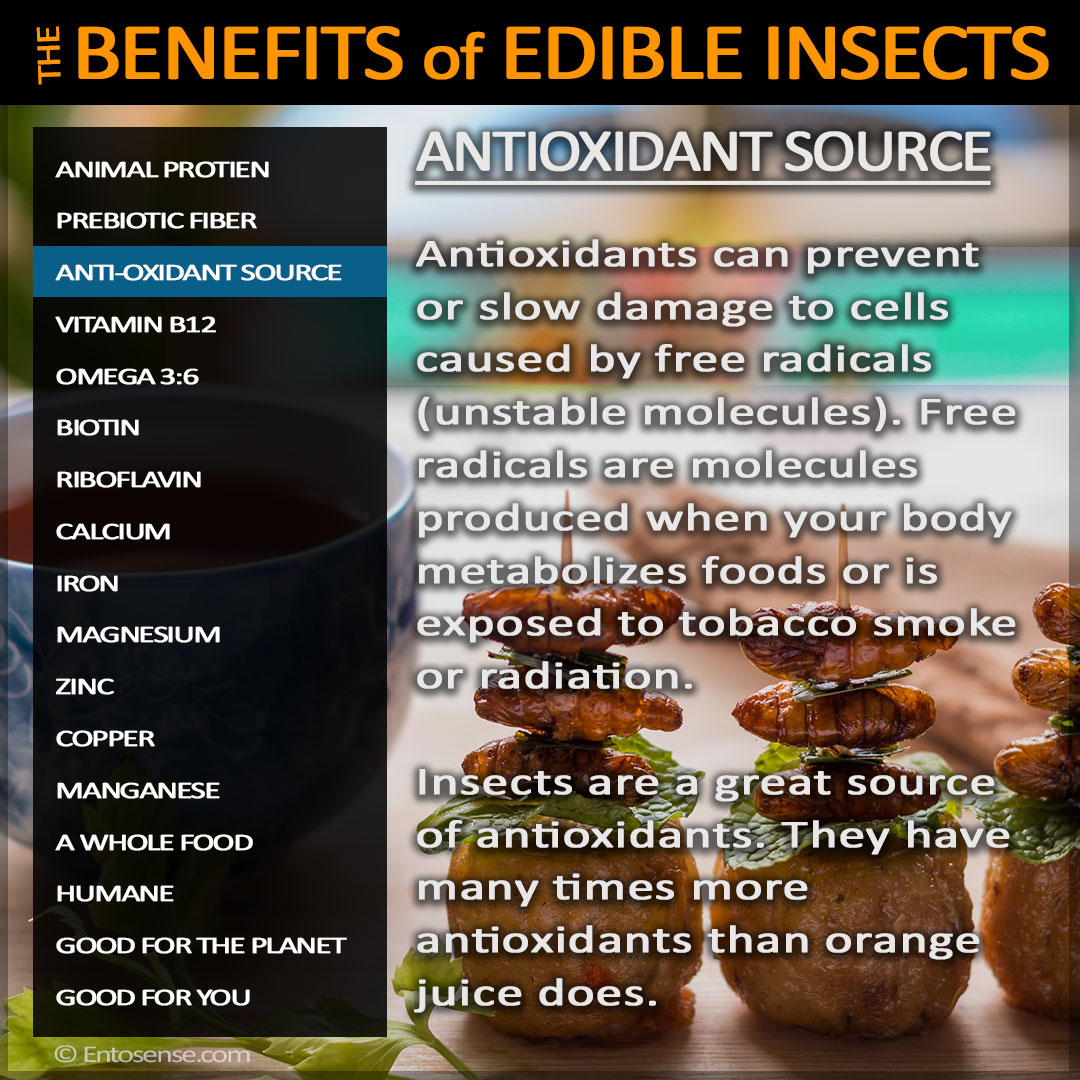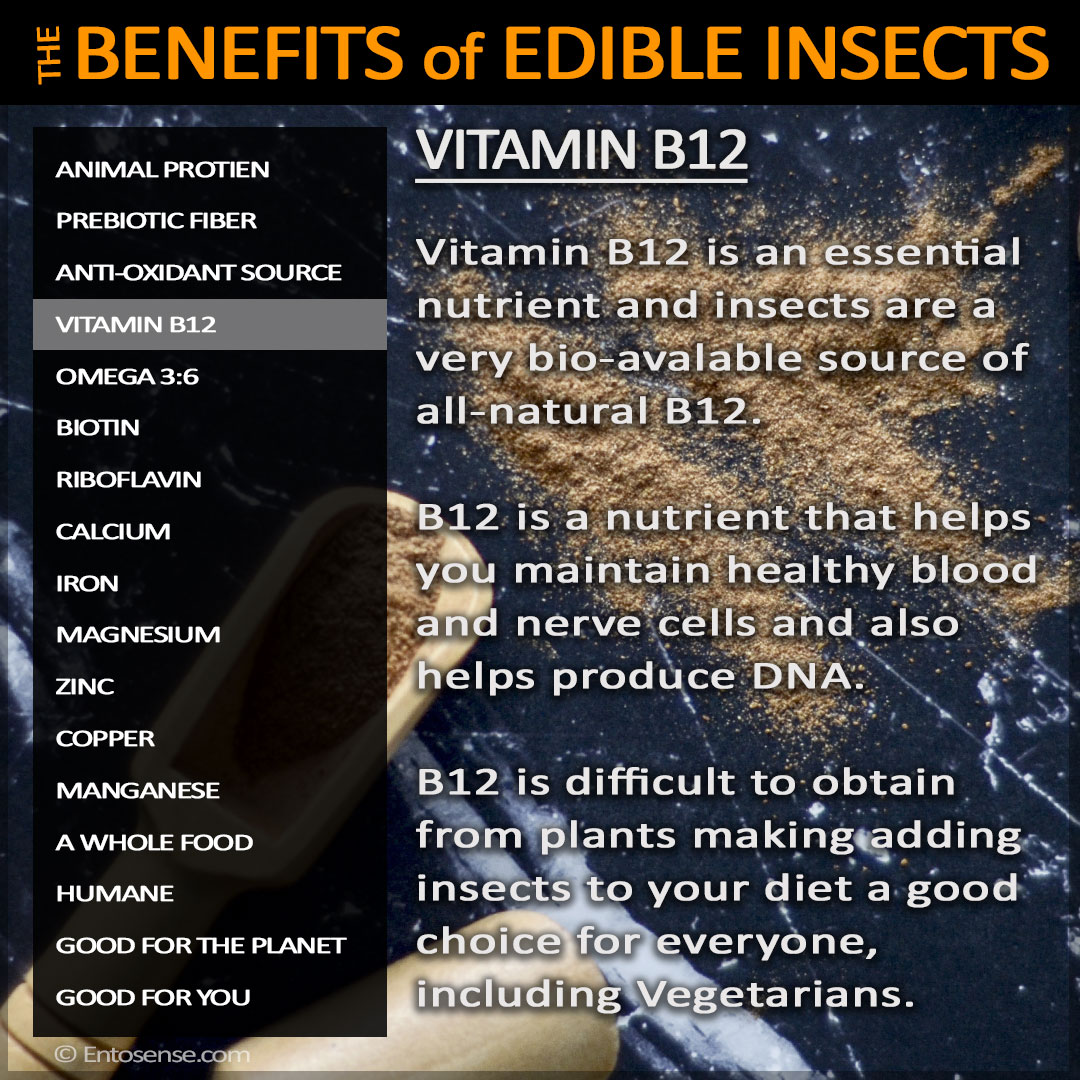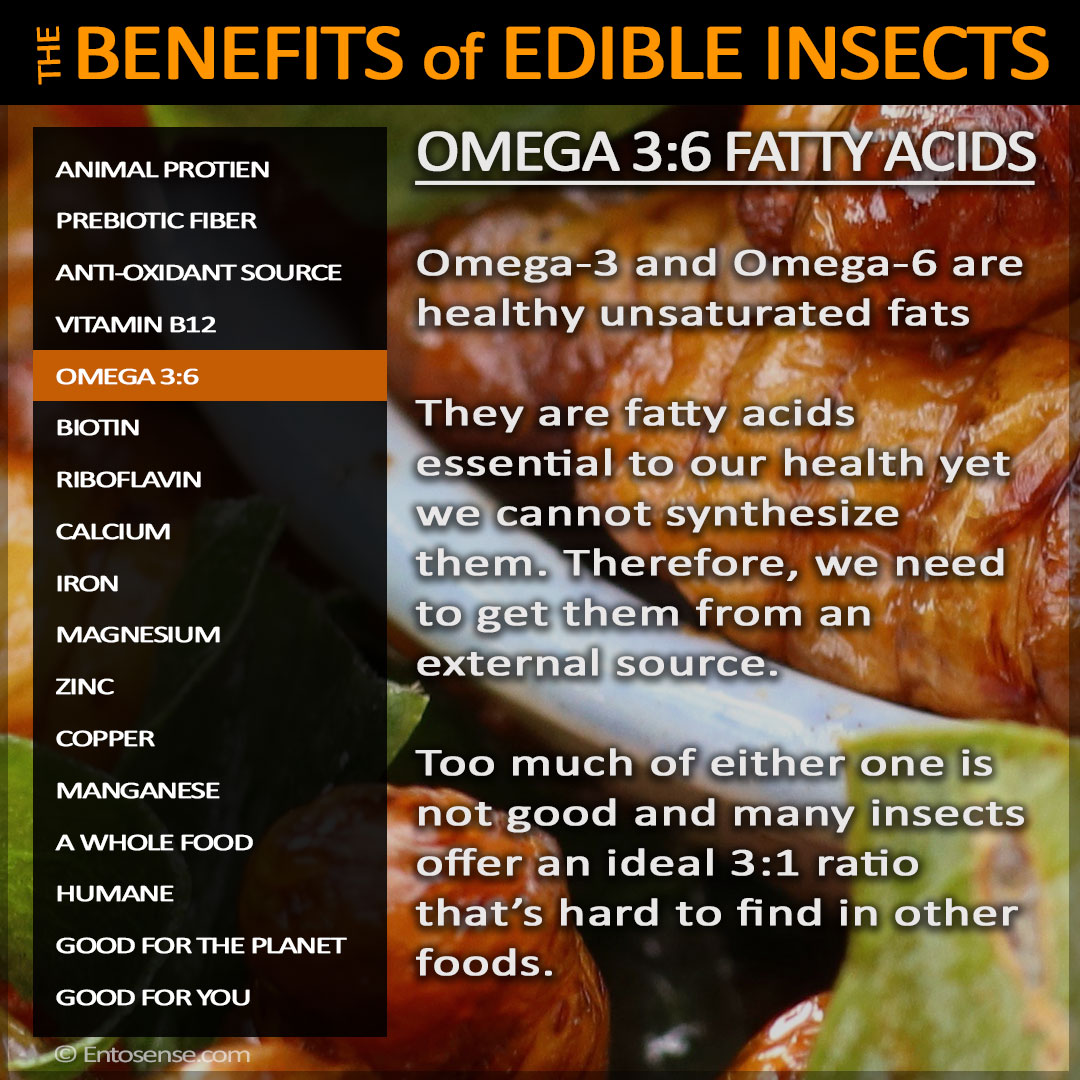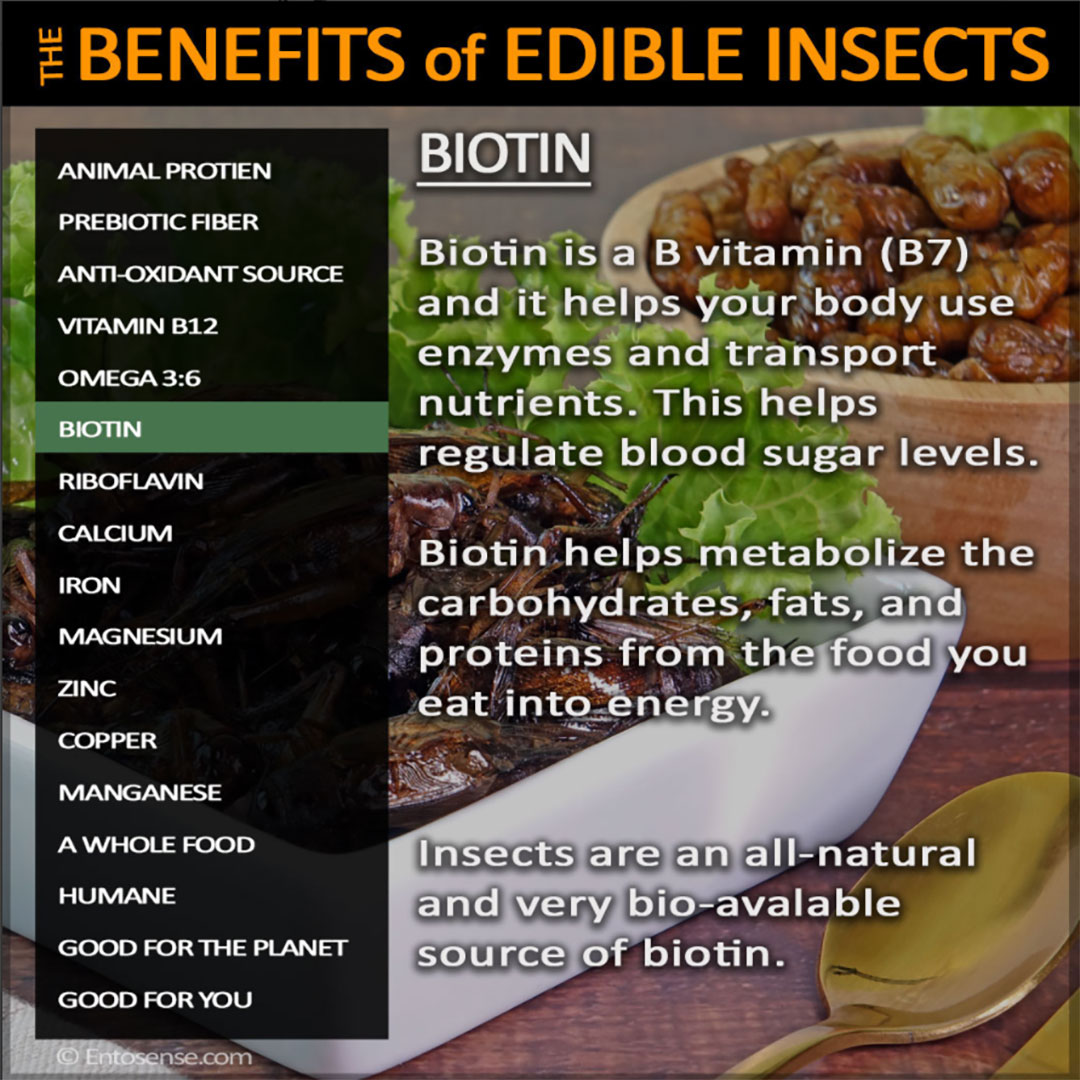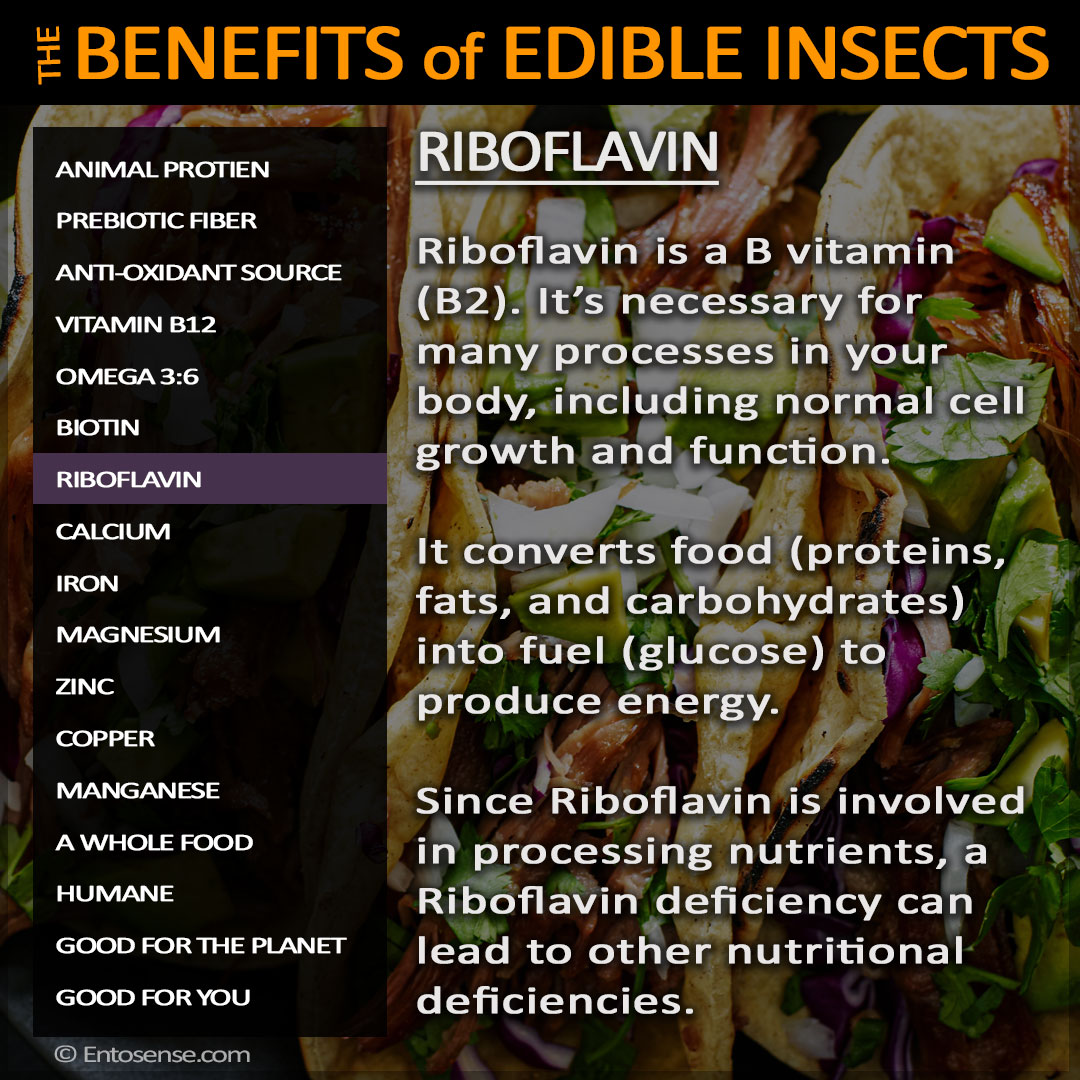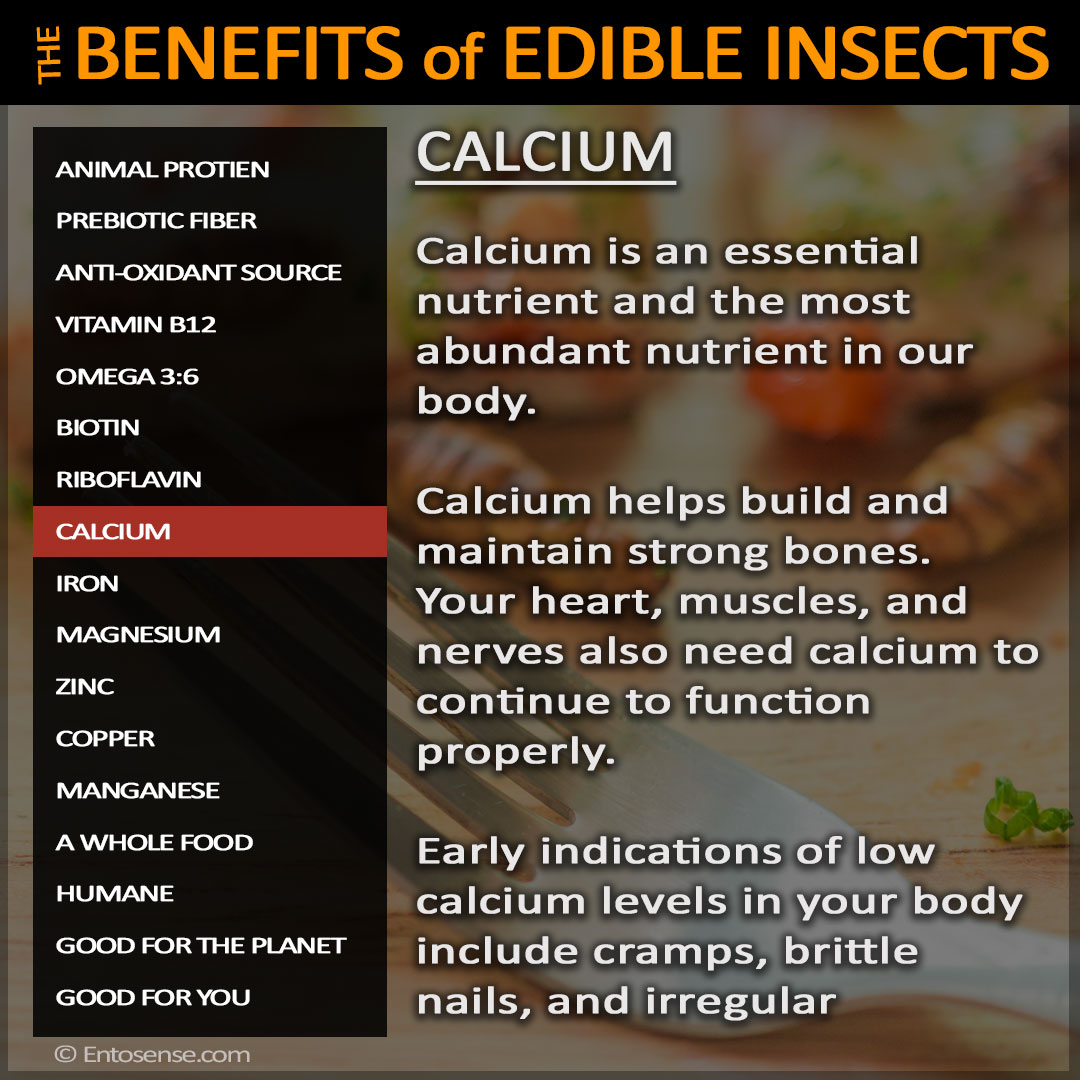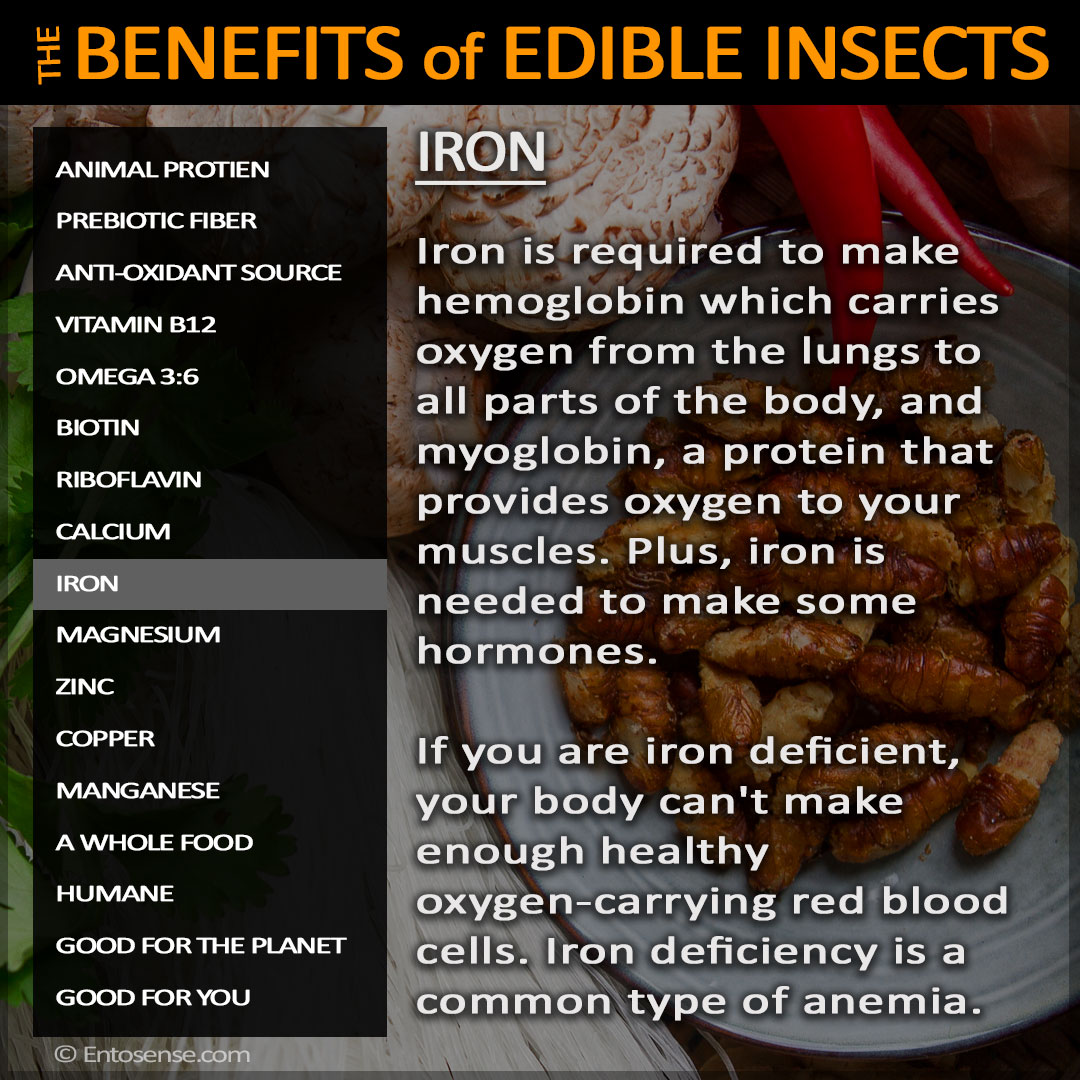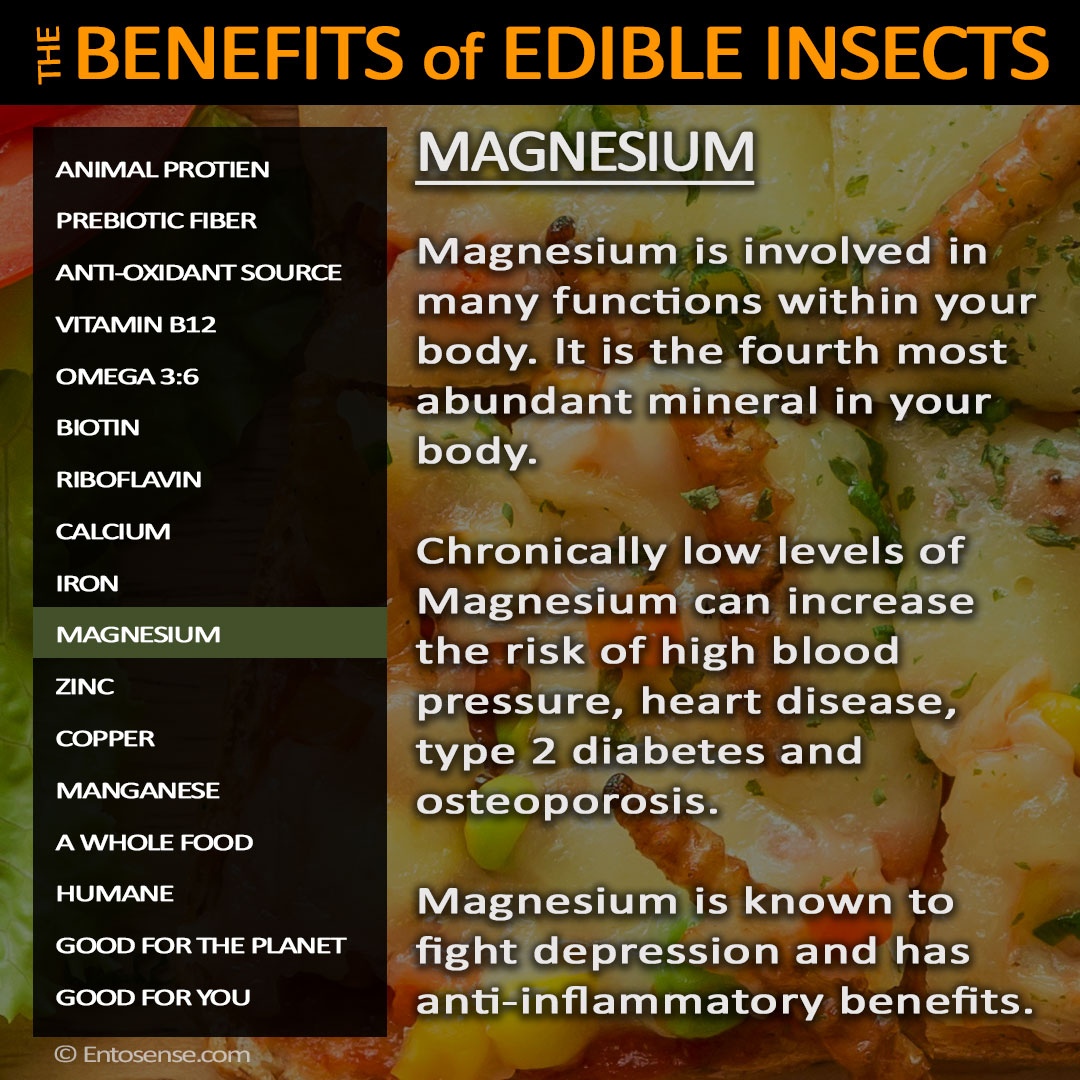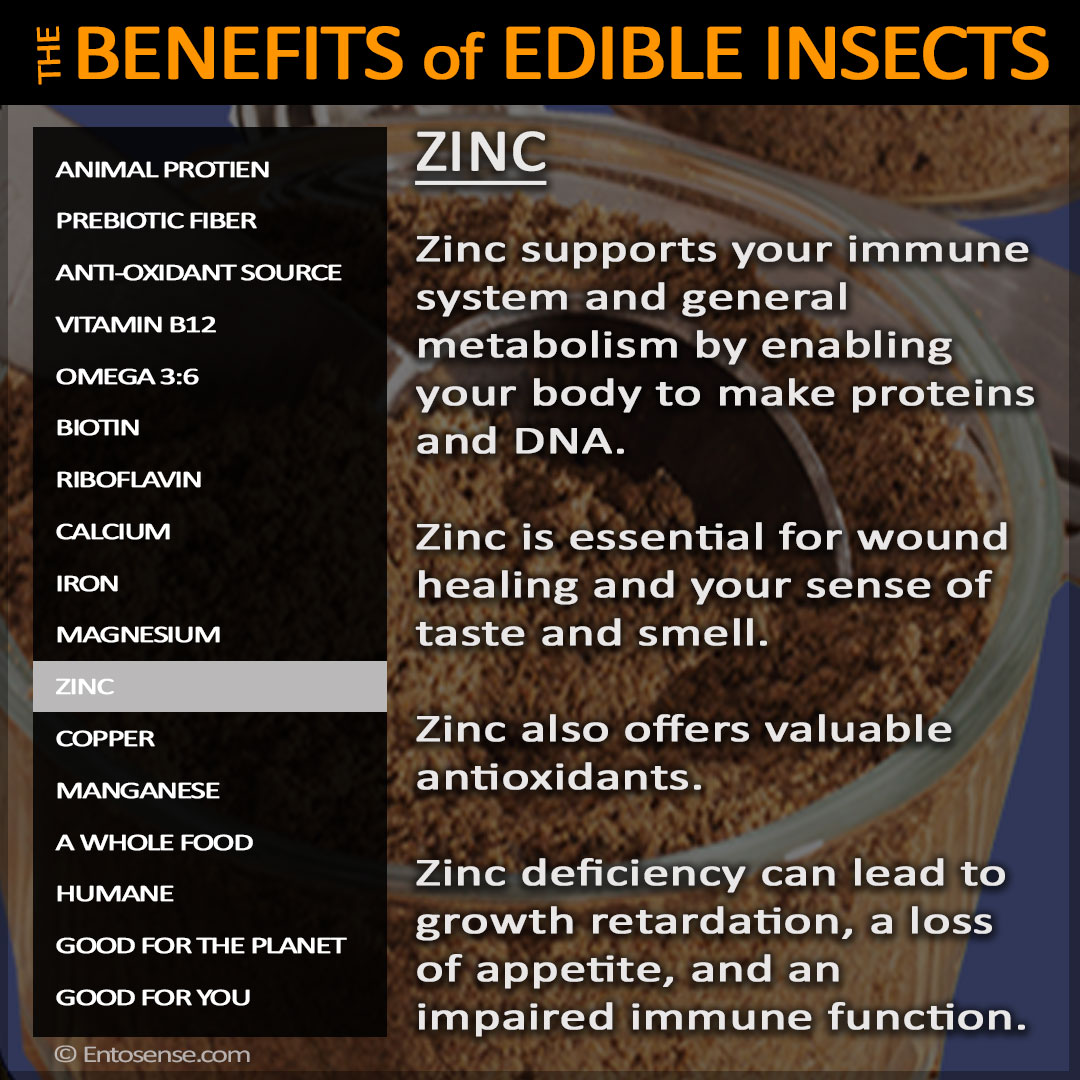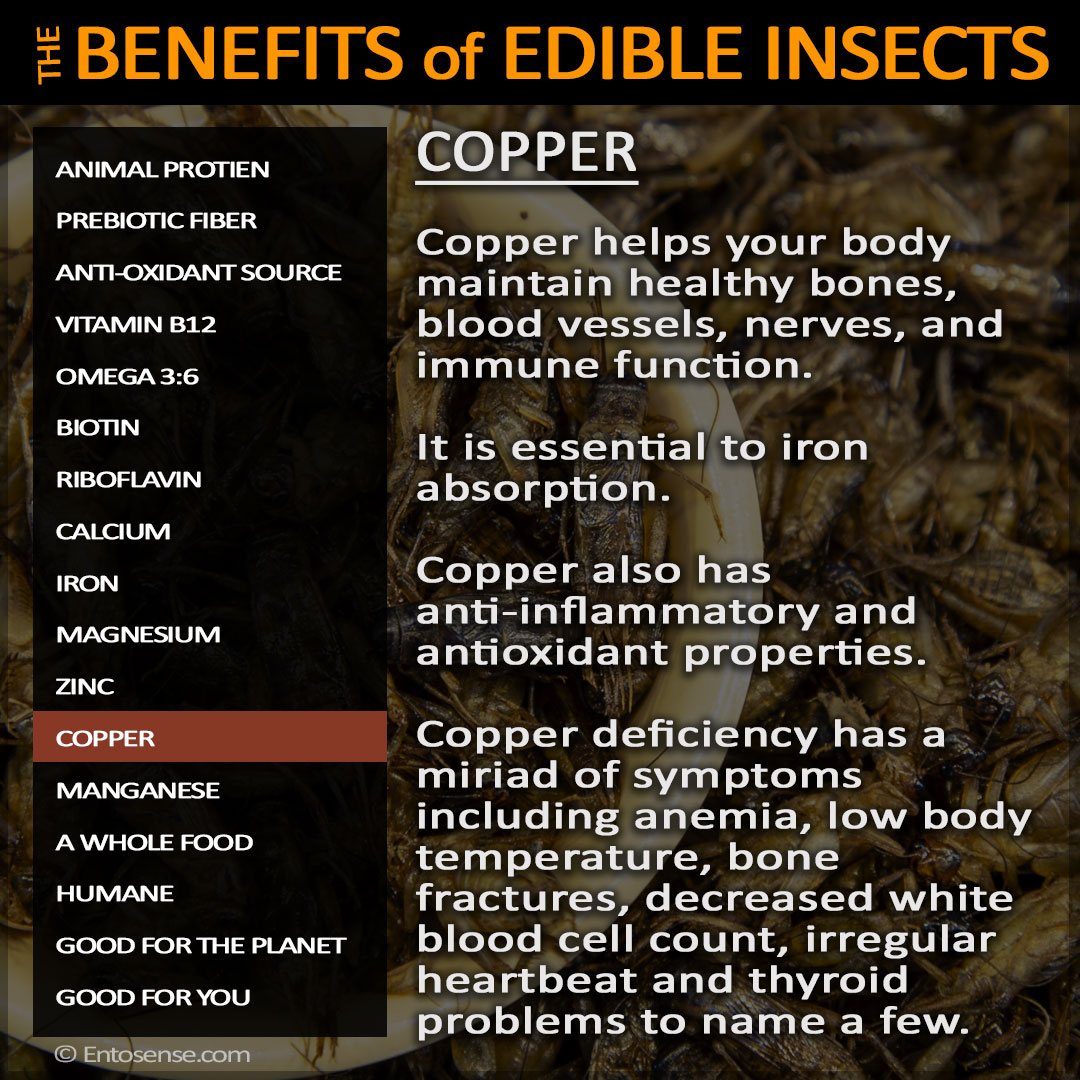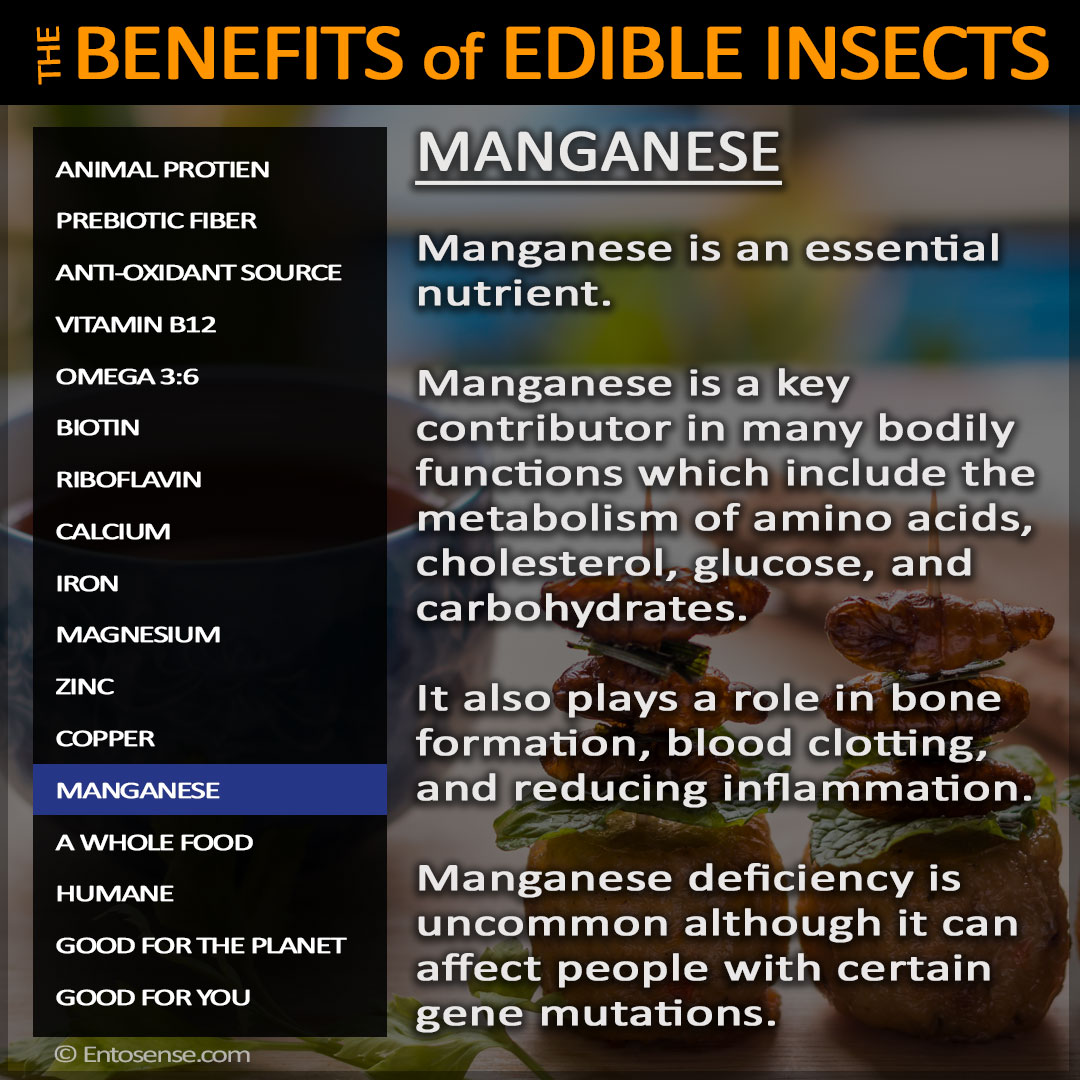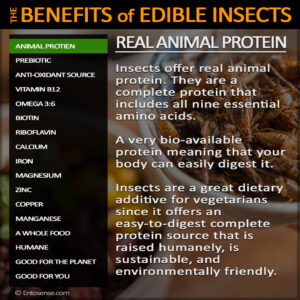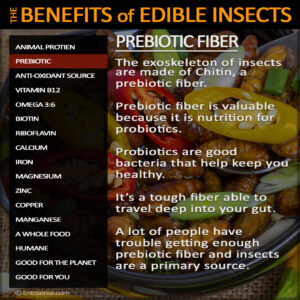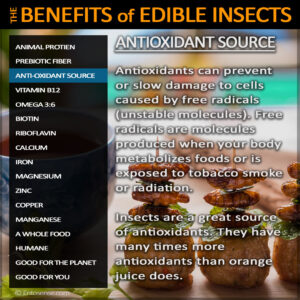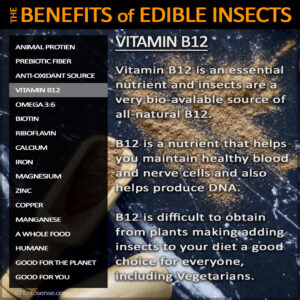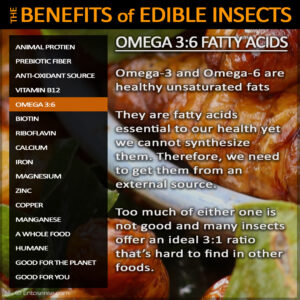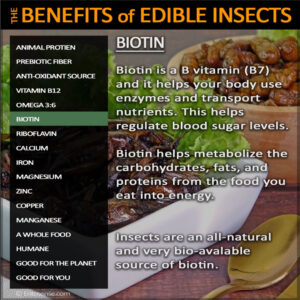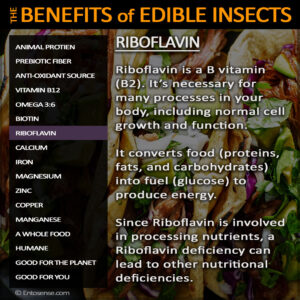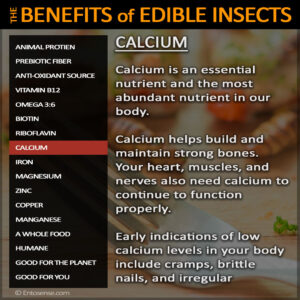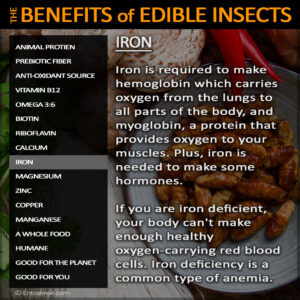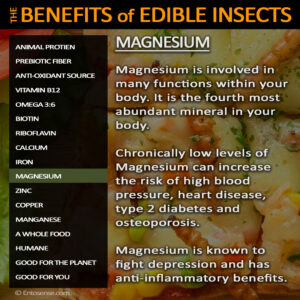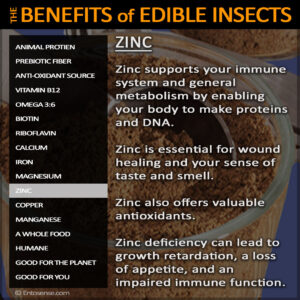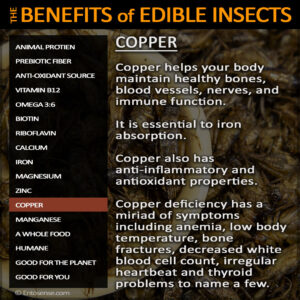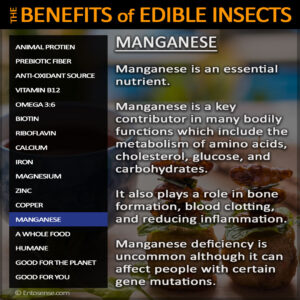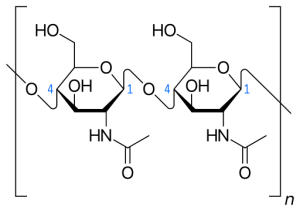Insects are the Largest and Most Successful Group of Animals on the Planet
It is estimated that insects comprise 80% of all animals (insects are animals). Around 1 out of every 5 animals is a beetle. By weight, insects weigh over 5X that of humans and are around half the total weight of all animals on earth. There are around 10 quintillion (10,000,000,000,000,000,000) insects alive today. That’s about 1.4 billion insects for each person.
Maybe insects are what’s missing from our North American diets?
Accepting insects as food makes sense. Insects are nutritious, sustainable, environmentally friendly, and raised humanely.
The nutritional value of insects varies considerably from insect to insect. The flavor and texture of each insect also vary making this a new and ancient culinary experience.
This may be a recent trend in North America and Europe, yet, around the world, 80% of countries eat insects every day and have been since the dawn of human existence.
Our southern neighbor, Mexico, enjoys nearly 200 different edible insects. Thailand has over 20,000 insect farms and one of Cambodia’s top exports is edible insects. The Mopane Worm is considered a delicacy in Zimbabwe, the Witchety Grub in Australia, Queen Ants in Columbia. It’s obvious that here in the United States and Canada, we’re the ones missing out.
Insects are packed with real animal protein, beneficial fats, vitamins, minerals, antioxidants and they are a prebiotic fiber. They’re animals we eat whole (all parts as opposed to just the meat) and their nutrients are more bio-available than livestock muscle tissue or even wheat.
One of the challenges, and also benefits, of raising insects is that they are what they eat in a significant way. Feed crickets carrots and they will be high in vitamin A. We can work with and control their diets to obtain an optimal product.
Insects are the new frontier in nutrition. We know enough to begin but there is still so much more to discover.
Edible Insect Protein
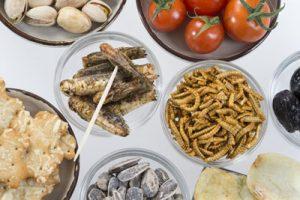 Insects offer a complete animal protein that includes all 9 essential amino acids. Insects have a wide but strong range of nutritional values and are very competitive with other protein sources.
Insects offer a complete animal protein that includes all 9 essential amino acids. Insects have a wide but strong range of nutritional values and are very competitive with other protein sources.
Cricket powder is an easy way to add protein to your diet. Cricket powder can be added to baking flour, included in smoothies, or sprinkled on your breakfast cereal.
It should be noted that the insect protein data here does not take into account variations in insect diets. Many farms are now producing crickets and mealworms with higher protein values.
Insects are Packed with Vitamins & Minerals
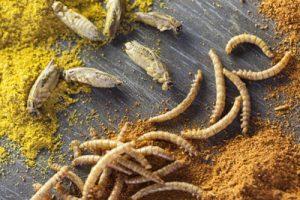 Speaking of insects in general is tough because every insect’s vitamin and mineral content varies by type and diet. However, the one thing that is consistent is that they are a great resource for many hard to obtain vitamins. The body can absorb these vitamins and minerals at a rate that is higher than beef or wheat.
Speaking of insects in general is tough because every insect’s vitamin and mineral content varies by type and diet. However, the one thing that is consistent is that they are a great resource for many hard to obtain vitamins. The body can absorb these vitamins and minerals at a rate that is higher than beef or wheat.
As an example, we will look at the cricket raised on a high protein grain diet. They are packed with B vitamins being especially high in B12. In fact, crickets offer over triple the amount of B12 when compared to salmon. They are also a good source of the biologically active form of vitamin A and Riboflavin (also known as B2).
When it comes to minerals, edible crickets pack almost five times as much magnesium as beef and three times as much iron. They supply more calcium than milk and they are high in zinc.
Insects are Super High in Antioxidants
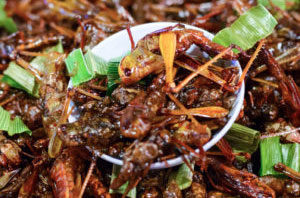 Antioxidants help protect your body from cell damage caused by free radicals (unstable molecules). Limiting DNA damage may inhibit the growth of cancerous tumors. Many edible insects are very high in antioxidants.
Antioxidants help protect your body from cell damage caused by free radicals (unstable molecules). Limiting DNA damage may inhibit the growth of cancerous tumors. Many edible insects are very high in antioxidants.
Crickets, grasshoppers, and silkworms have over three times the antioxidants as orange juice.
Adding insects to your diet can be a powerful weapon in the fight against the free radicals in your body.
Chitin is a Prebiotic Fiber
Eating insects can help maintain a healthy gut biome. Chitin is the exoskeleton of an insect and it has valuable properties in its own right. Chitin is a prebiotic fiber, basically nutrients for probiotic gut bacteria.
Chitin has also shown promise in preventing the development of inflammation in the colon.
A lot of research is currently being done on chitin’s potential benefits.
Beneficial Fats of Edible Insects
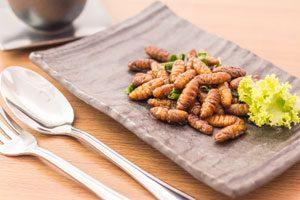 Edible insects are a strong source of “good” unsaturated fats. Essential fatty acids cannot be synthesized by the human body and must be obtained through diet. Insects are a great way to deliver these healthy fats. Crickets, as an example, have an optimal Omega 3:6 balance.
Edible insects are a strong source of “good” unsaturated fats. Essential fatty acids cannot be synthesized by the human body and must be obtained through diet. Insects are a great way to deliver these healthy fats. Crickets, as an example, have an optimal Omega 3:6 balance.
Other sources of Omega 3 and Omega 6 such as salmon and other fish may contain high levels of heavy metals. With insects, the risk is much lower.
Very Bio-Available – Easily Digested
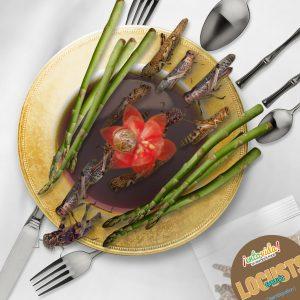 On top of the amount of protein, fats, antioxidants, vitamins and minerals provided, insects are more digestible than other protein sources. Your body can absorb more of what is available.
On top of the amount of protein, fats, antioxidants, vitamins and minerals provided, insects are more digestible than other protein sources. Your body can absorb more of what is available.
Plus, when we eat other animals we leave out the heart, liver and other internal organs. Generally, we only eat the muscle tissue. With edible insects, we eat the whole animal and this adds a myriad of other nutritional benefits.
Edible Insects Around the World | Protein & Fat Content
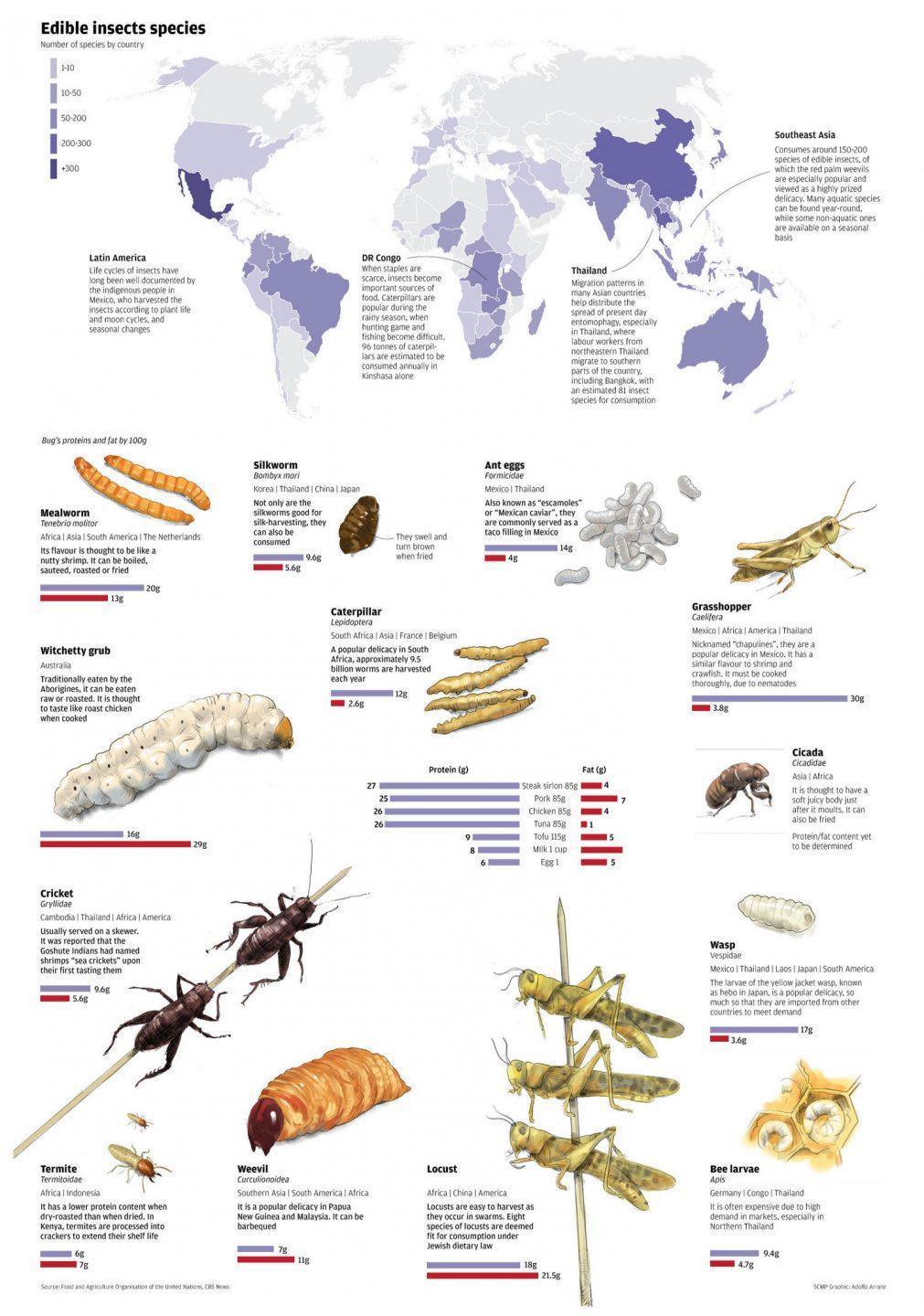
This infographic was developed by the South China Morning Post based upon the FAO’s 2013 report on food security and the use of insects as one solution.
NUTRITIONAL VALUES
Analyzed by Maxxam Analytics
- Energy: 1973kJ (472kCal)
- Protein: (g) 58.76
- Fat: (g) 24
- Saturated Fat: (g) 8.48
- Trans Fat: (g) .218
- Cholesterol: (mg) 228
- Carbohydrates: (g) 8.4
- Fiber, total dietary: (g) 6.0
- Sugars: (g) 0.5
- Ash: (g) 6.5
- Calcium: (g) 0.11
- Iron: (g) 0.002
- Potassium: (g) 1.1
- Sodium: (g) 0.31
- Omega-3: (g) 2.81
- Omega-6: (g) 6.28
- Saturate Fatty Acids: (g) 8.48
- Cis-Monounsaturated: (g) 5.14
- Cis-Polyunsaturated: (g) 9.09
- B-12: (ug) 24
This information is specifically for Cricket Powder
Edible Insects are Accessible to People Worldwide
Edible insects are available to just about anyone anywhere, They can be grown at home, on small farms, and by large industrial firms.
This makes them a powerful answer to food security problems.
EDIBLE INSECTS: Future prospects for food and feed security
A comprehensive source can be found on the U.N.’s F.A.O. website:
http://www.fao.org/docrep/018/i3253e/i3253e06.pdf
Bugs taste good, they’re healthy, sustainable, and raised humanely. So, what‘s holding you back?
People enjoy edible insects once they’re capable of conquering the mental challenge of eating a bug. Give them a try and keep in mind, the toughest insect to eat is your first one. After that, you’ll surprise yourself when you start to think of insects as food. Tenebrio Pizza for dinner? It’ll sound delicious.

Good for You | Good for Our Planet







